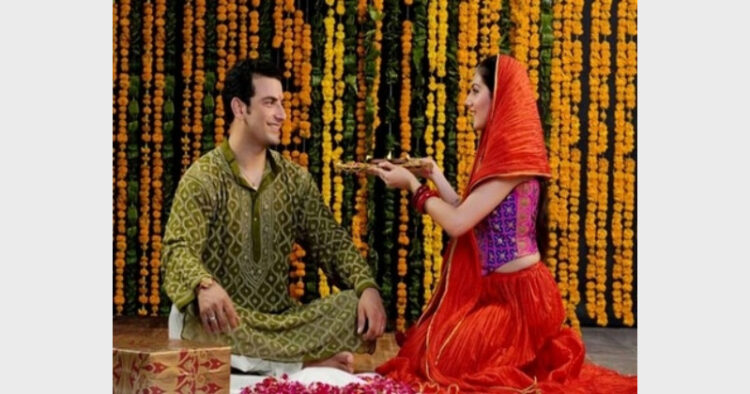As the festivities for Diwali concluded with much pomp and glory, millions of Hindus across India will soon be celebrating the bond between brothers and sisters on Bhai Dooj, which will fall on November 6, just two days after Deepawali.
As mentioned, Bhai Dooj is celebrated annually to mark the bond between brothers and sisters. Sounds familiar, right? That’s because while there are festivals of different importance all over the world but those that celebrate the sacred and auspicious bond of brothers and sisters are few like, Bhai Dooj and Raksha Bandhan.
What many might find puzzling is that when there already is Raksha Bandhan, what makes Bhai Dooj so significant when celebrating sibling love? And also, what’s the difference between Raksha Bandhan and Bhai Dooj?
For starters, both occasions have different origins in holy texts.
The origins of Rakshabandhan can be found during the events of the Mahabharata. Legend dictates that when Lord Krishna accidentally nicked his finger on his ‘sudarshan chakra’, Princess Draupadi tore a piece of her saree and tied it to his finger to stop the bleeding. Lord Krishna was so touched by this gesture that he vowed to protect and cherish her.
Whereas Bhai Dooj has two origin stories. The first legend narrates that after slaying the evil demon Narakasura, Lord Krishna visited his sister Subhadra, who warmly welcomed him with sweets and flowers. She also affectionately applied tilak on Krishna’s forehead. The other story is that Yamraj, God of Death, visited his twin sister, Yamuna. In return, she welcomed him with a tilak ceremony, garlanded him and fed him special dishes. They dined together after a long time and exchanged gifts.
Hence on Bhai Dooj, the aarti and tika play a huge part, whereas, on Raksha Bandhan, a sacred thread is tied on the brother’s hand.
The tying of Rakhi symbolizes the promise of a brother to protect and safeguard his sister from all evil forces. While on Bhai Dooj, with the tika put on the brother’s forehead, the sister vows to protect her brother from any evil at all costs.
Though the application of tilak is a common ritual in both Bhai Dooj and Rakhi celebrations, it holds a special significance during Bhai Dooj.
Further, while Raksha Bandhan is not limited to celebrating only between brothers and sisters. It can be performed between sisters, only brothers, and friends as well. On the other hand, Bhai Dooj is especially for the brother-sister duo.
Another key difference among the festivals is that Raksha Bandhan is celebrated on the full moon of the Savan month of the Hindu year as per the Hindu calendar. The month of Savan is considered an auspicious period among the Hindus, and Bhagwan Shiv is worshipped every Monday during this entire time.
Bhai Dooj, also known as Sodara Bidige in Karnataka, Bhai Phota in Bengal, Bhai-Beej in Gujarat and Bhau Beej in Maharashtra, is observed on the second lunar day of the Shukla Paksha (bright fortnight) of the Kartika month of Vikram Samvat Hindu calendar. The occasion marks the last day of the five-day-long celebrations of Diwali or the Tihar festival.
With all these stories, rituals, facts, and legends associated with Raksha Bandhan and Bhai Dooj, you should be able to distinguish between the two festivals. With only a day left for Bhai Dooj, choose the best and truly special present for your siblings or cousins and surprise them with memories to cherish for a lifetime.



















Comments